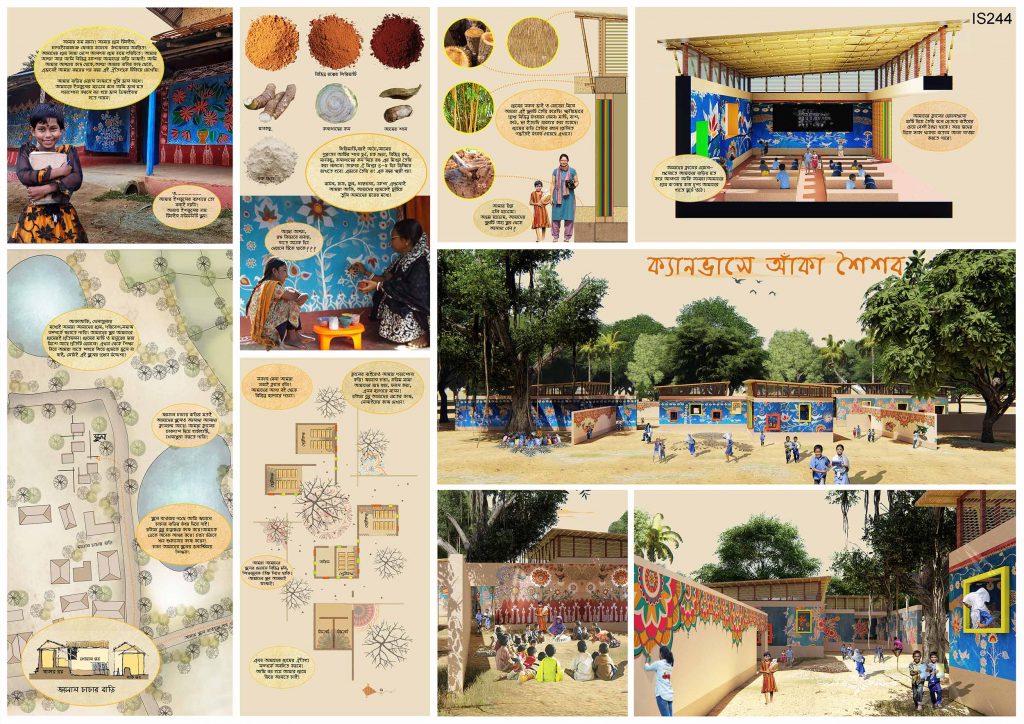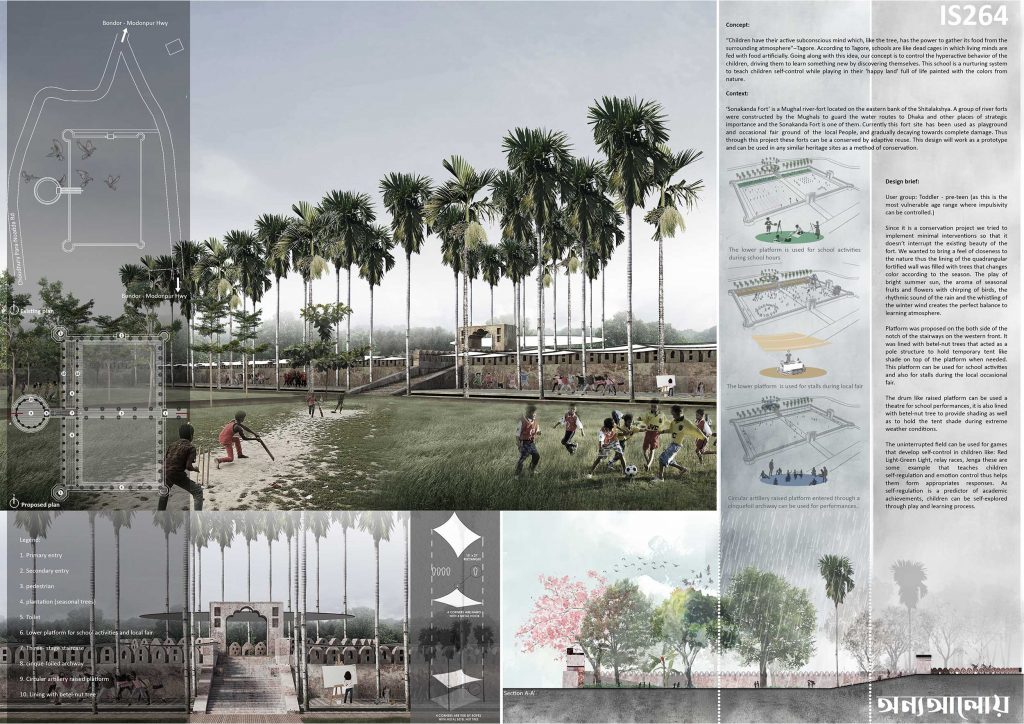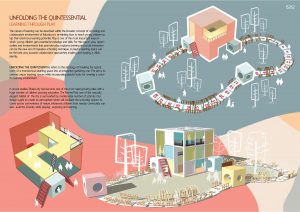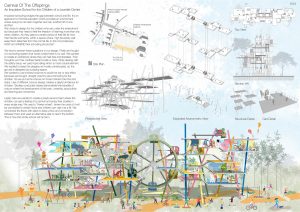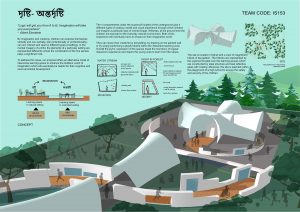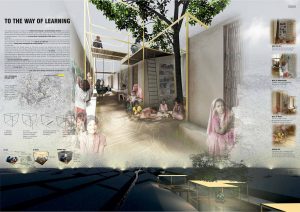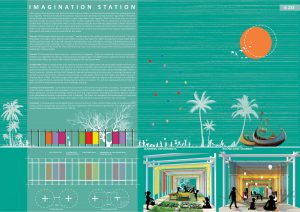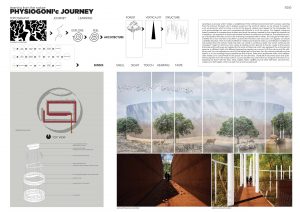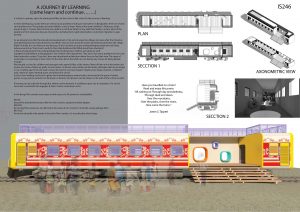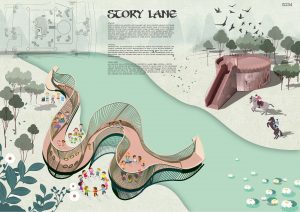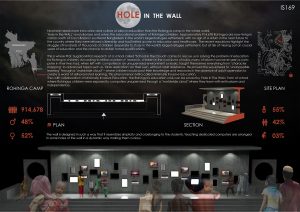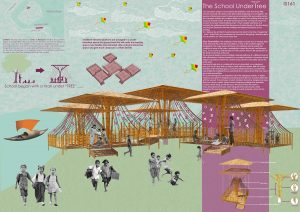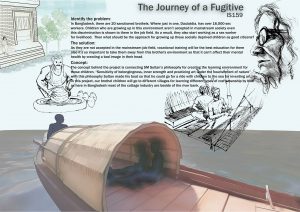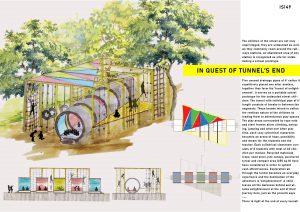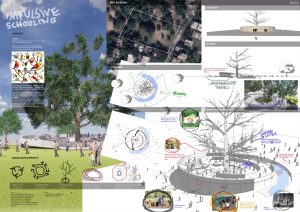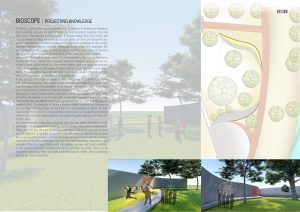IMPULSIVE SCHOOLING
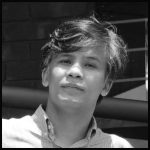
Sheikh Ahsan Ullah Mojumder
Associate Professor, BUET

DR. ASMA NAZ
Assistant Professor, BUET
Taorem Sananu
Usama Ibn Anwar
Fahad Been Monsur
from Bangladesh University of Engineering and Technology (BUET)
THE UNSCHOOL
The idea of the project captures the true meaning of “impulsive schooling” that goes beyond the traditional learning environment with active teaching (i.e., guided by a teacher). It also goes beyond the elaborate, fancy indoor/outdoor playgrounds for children that focuses more on architectural shapes and forms. True to impulsive learning, the design is “anticipatory,” which means that it deals with “possibilities” of what the children might learn. While learning is open-ended, the strength of the design is in the thoughtful, explicit and implicit exposure to various learning environments that have the potential to trigger unpredictable and diverse interests among children. For example, the bus (perhaps carrying books or exhibits of the city) may also pique scientific curiosity and inspire dialogue among children about the mechanical system of the bus itself.
… Citation from Sheikh Ahsan ullah Mojumder and Dr. Asma Naz
Kawser Ahmed
Shamma Tabassum Haque
from Rajshahi University of Engineering and Technology (RUET)
CANVAS-E AKA SHOISHOB (ক্যানভাসে আঁকা শৈশব)
The strength of the design lies in the breaking up of classrooms with open spaces in-between where children interact, discover and explore things beyond regular learning. Through creative expressions, learning occurs as they explore materials, building techniques, nature, spices/herbs (chemicals), folk art, aesthetics and games. Sharing such creative expressions help them learn about other children. At the same time, it’s also a process of placemaking and will help develop self-identity.
… Citation from Sheikh Ahsan ullah Mojumder and Dr. Asma Naz
Annanya shil Chaity
Akash Kumar Das
from North South University, Dhaka
ONNO ALOYE (অন্য আলোয়)
The design focuses on the importance of history in providing identity for children, and how they can respect and learn from history by making it an active part of their growing up. Various sports, entertainment and creative activities of children (solo or in groups) will organically grow in and around a historical site (Sonakanda fort), sometimes with the use of temporary tent-like structures. The project gives a context for these activities from which children can learn to understand self and others. [It’s also important to note that such initiatives may help with the conservation of historical structures, protecting them from being demolished.]
… Citation from Sheikh Ahsan ullah Mojumder and Dr. Asma Naz


